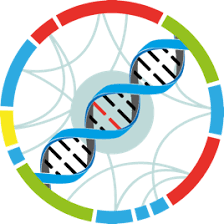Study : Genetic Linkage Map of Avena barbata
Identification
Name
Genetic Linkage Map of Avena barbata
Identifier
dXJuOkVWQS9zdHVkeS9QUkpOQTUxNzMyMw==
Description
This project constructed a genetic linkage map of a cross between two ecotypes of the slender wild oat Avena barbata in California. These ecotypes were first described in the 1970s by RW Allard and colleagues from allozyme surveys, and were named mesic and xeric due to their association with moister or drier habitats (Clegg amp; Allard. 1972. Proc. Natl. Acad. Sci. U. S. A. 69:1820). A population of ~180 Recombinant Inbred Lines that had originally been mapped with AFLPs (Gardner amp; Latta. 2006. Mol. Ecol. 15:1321-1333) was screened for Genotyping-by-sequencing polymorphisms using two library preparations: A single restriction digest using PstI (Elshire et al. 2011. Plos One 6:e19379) and a double restriction digest using PstI and MspI (Poland et al. 2012. Plos One 7:e32253). A framework map of 4015 stringently filtered loci greatly expanded the coverage of the earlier AFLP map. An additional 8000 secondary loci and 30000 presence absence variants can be placed on the map. Having an improved linkage map of the polymorphisms distinguishing these wild ecotypes will assist with studies to identify quantitative trait loci that contribute to trait variation, adaptation, and evolution of A. barbata in California. It will also permit genomic comparisons with other Avena species.Note that in GBS, the barcodes are ligated within the 100 bp sequence read. Thus in the fastq files, sequence prior to the PstI restriction site (CTGCAG) is the barcode. Barcode sequences for each run are included in the description field accompanying each fastq file.
Genotype
| Accession number | Name | Taxon |
|---|
